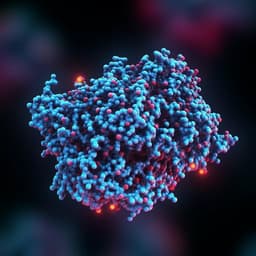
Biology
Computational design of non-porous pH-responsive antibody nanoparticles
E. C. Yang, R. Divine, et al.
Discover how a team of innovative researchers, including Erin C. Yang and Robby Divine, has designed cutting-edge octahedral nanoparticles that respond to environmental changes. These nanoparticles offer a groundbreaking method for targeted delivery of biologics, ensuring precise treatment options through antibody-mediated targeting and tunable pH-dependent disassembly.
~3 min • Beginner • English
Related Publications
Explore these studies to deepen your understanding of the subject.







